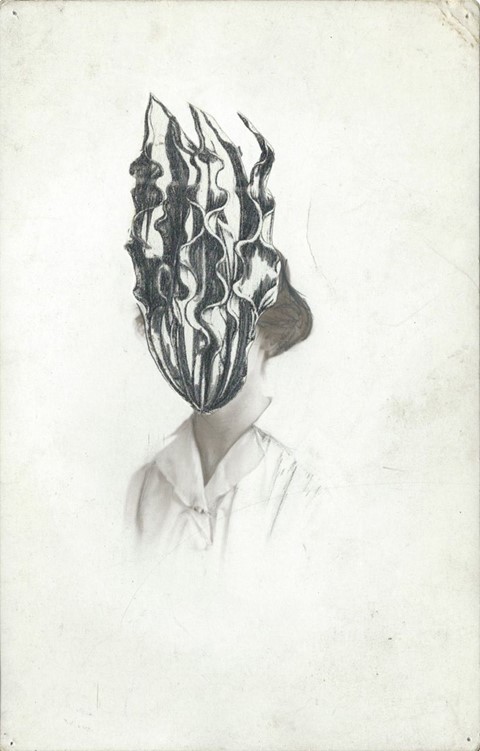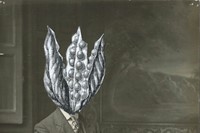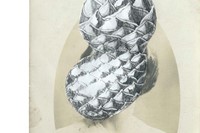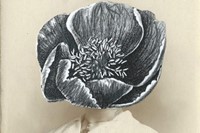Victorian portraiture and botanical illustrations collide in the beautifully surreal work of Alida Rodrigues
Who? Fresh from her artist residency at Iniva last October, Alida Rodrigues is a young, Angola-born London-based artist causing a stir with her innovative collages which bring together Victorian portrait photography with botanical illustrations to surreal and lovely effect.
What? The idea for her series, which she has dubbed The Secret History of Plants, arose when a friend presented her with a nineteenth century postcard. Shortly after she discovered the Collins Guide to Mushrooms and Toadstools and had the idea of combining the two elements in a mixed media experiment. "It wasn’t meant to be anything, it just started as an exploration," Rodrigues explains. "I didn’t expect it to become an obsession, or lead to my starting a collection much like the old Victorian collectors." But that's exactly what happened, and Rodrigues has gone on to create an entire world of floral headed figures – from a tulle-adorned lady topped by a spikey but superbly detailed artichoke to a cross-legged gentleman in his drawing room sprouting seed capsules from his neatly buttoned shirt.

Rodrigues sources her imagery from a variety of places: "I spend a lot of time on eBay, but increasingly I find images through my links with antique and second hand shops." Indeed, a number of the old photographs she reappropriates are the result of house clearances, usually following the passing of an elderly relative. "This adds another level of poignancy to the old photos with family histories that are often lost and open to reinterpretation," she muses. "While it may seem that the selection of botanical illustrations is arbitrary, I usually try to match the illustration with my interpretation of the photograph."
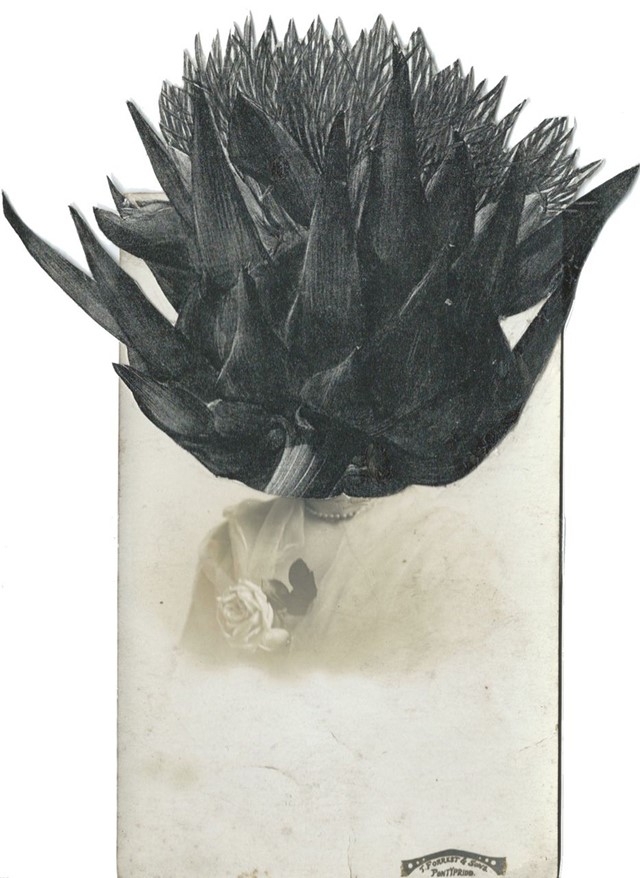
Why? A selection of Rodgrigues' works are currently on display at Tiwani Contemporary as part of Mythopoeia, a group exhibition with three other artists all of whom share an interest in crafting their own new mythologies. So what does she hope people will take away from the show? "I think everyone has his or her own interpretation and for me that is part of the experience," she explains. "We can all look at these old photographs, sometimes of people long forgotten, and create our own stories. It also helps us to focus on our own individual collections of photographs – a format that is increasingly dying out with the modern emphasis on digital images."
Mythopoeia is at Tiwani Contemporary until May 9.
